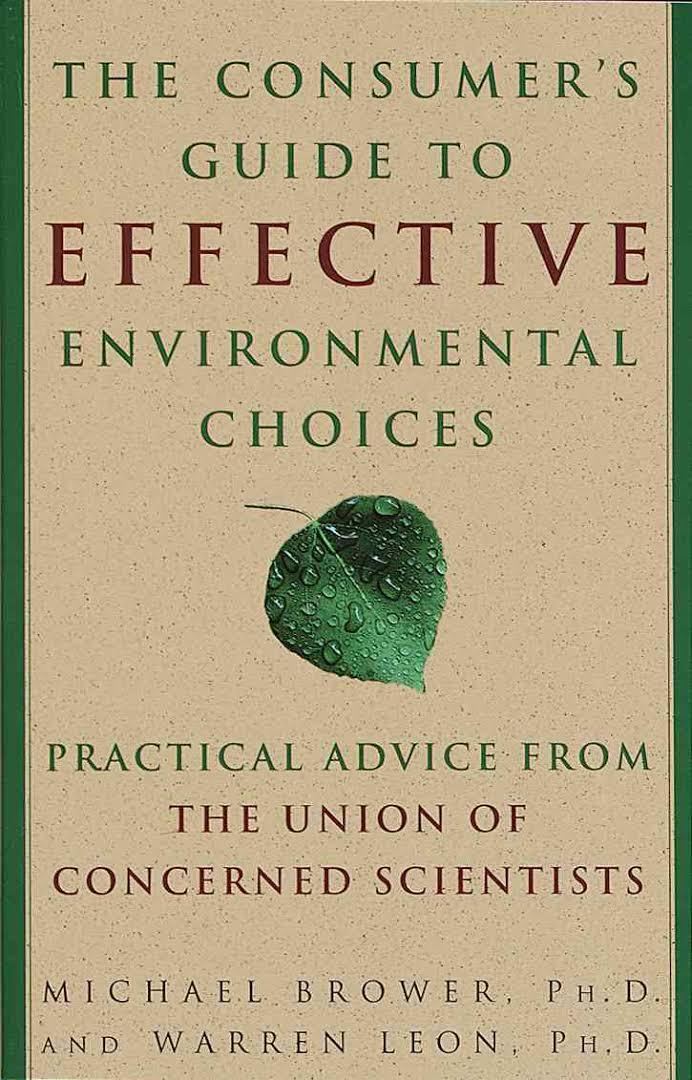7.2 /10 1 Votes
Language English Pages 304 OCLC 39335766 Page count 304 Publisher Three Rivers Press | 3.6/5 Goodreads Publication date 1999 ISBN 0-609-80281-X Originally published 1999 Genre Environmentalism Country United States of America | |||||||||||||||||||||||||||||||||
 | ||||||||||||||||||||||||||||||||||
Media type (Electronic, Paperback) Similar The World Is Blue, The mountains of Califor, Whole Earth Discipline, Under the Sea Wind, Cool It: The Skeptical Environm | ||||||||||||||||||||||||||||||||||
The Consumer's Guide to Effective Environmental Choices: Practical Advice from the Union of Concerned Scientists is a handbook printed by the nonprofit environmental group Union of Concerned Scientists.
In accordance with UCS's pledge to provide scientifically sound and nonbiased solutions to environmental problems, this book's main goal is to debunk myths associated with the environmental movement and reinforce realistic ways in which the average citizen can do his or her part in conservation.
The back cover of the book reads:
"Paper or plastic? Bus or car? Old house or new? Cloth diapers or disposables? Some choices have a huge impact on the environment; others are of negligible importance. To those of us who care about our quality of life and what is happening to the earth, this is a vastly important issue. In these pages, the Union of Concerned Scientists help inform consumers about everyday decisions that significantly affect the environment. For example, a few major decisions such as the choice of a house or vehicle have such a disproportionately large effect on the environment that minor environmental infractions shrink by comparison. This book identifies the 4 Most Significant Consumer Related Environmental Problems, 7 Most Damaging Categories, 11 Priority Actions, and 7 Rules for Responsible Consumption."
Excerpts
"Moreover, it can be hard to educate millions of consumers about the specific impacts of their consumption choices, and it is easy for them to be confused. Most often Americans do not fully understand the dangers associated with particular products, but sometimes they also remain unaware of developments enhancing product safety. Seventeen years after CFCs were eliminated from spray deodorants and hairsprays, many people still think those products destroy the ozone layer. Similarly, a significant share of the environmentally concerned public is unaware that foam cups are no longer responsible for ozone destruction."[1]
From page 85:
*PRIORITY ACTIONS FOR AMERICAN CONSUMERS:
